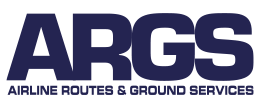The US is the world’s biggest commercial passenger traffic region but there remain many black spots on the route map – notably into Asia, South America, Europe and Africa. However, new point-to-point long-range efficient aircraft like the Boeing 787 Dreamliner are opening up more network development opportunities for airlines from all continents to reach cities across the country. Justin Burns reports
According to the US Department of Transportation, 849.3 million passengers used airlines in the US in 2017, up from 824 million in 2016 and over 50 million more than in 2015. The International Air Transport Association (IATA) forecasts traffic will grow 2.1% a year annually as demand rises and more links are added.
There is certainly room for more connections. For instance, despite the close proximity, many airports in the US still lack routes into South America. This is especially the case for gateways on or near the US west coast, including one of the busiest – McCarran International Airport in Las Vegas – although this has finally changed. June marked the start of Las Vegas’s first-ever non-stop connection to South America when LATAM Airlines commenced a thrice-weekly service from Sao Paulo, Brazil.
McCarran chief marketing officer, Chris Jones, says the route has performed “extremely well” to date and the airport hopes to see LATAM “continue to grow its presence in 2019 and beyond”.
The airport is targeting further international routes after adding Brazil, which for years has been one of the top unserved markets. “Tokyo is still very high on the target list, and Dublin also is an area we believe could easily support a non-stop Las Vegas service,” Jones says.
McCarran has also grown its network to Europe this year. British Airways resumed thrice-weekly service from London Gatwick in March, and Eurowings began a new Munich service in mid-April.
Elsewhere, route development continues at San Francisco International Airport with links added to all corners of the globe – but like McCarran, it also says South America is still not served sufficiently.
The region is San Francisco airport route network planners’ main target market for new routes at the moment and in the year ahead, particularly Brazil, which remains an area of focus as passenger numbers in both directions on that sector are very high.
Other new links include the launch in September of Qantas flights connecting the Californian gateway with Melbourne, while in October United started a Papeete route and Level began flying from Barcelona.
From Singapore to Iceland
The Asian region is another that is still underserved from the US, but this is beginning to change thanks to more modern and efficient aircraft.
Airlines and airports are adding direct routes. Los Angeles International Airport will welcome Singapore Airlines in November when the carrier starts a new service from Singapore Changi Airport; it will eventually serve the market 10 times a week with an A350.
On the east coast of the US, Asian connections are also needed and represent one of commercial aviation’s longest sectors.
In September, Washington Dulles International Airport gained its longest direct route when Cathay Pacific started a service from Hong Kong.
The airport is looking to grow its network and is in discussions with current and potential future carriers about several new and expanded air service opportunities around the world.
Washington Dulles network planning chiefs see “viable” new international market opportunities in Asia, Israel, Latin America and Europe.
However, the main focus of network development efforts will be to grow Dulles by increasing route density, or adding flights to existing destinations.
Meanwhile, Cathay Pacific will also add a new connection from Hong Kong to Seattle-Tacoma International Airport from March 2019, using an A350.
In Colorado, Denver International Airport has been growing its international network but is targeting more into Asia (to date it only serves Tokyo), although this is not the only market it has in its sights.
Denver vice president of air service development, Laura Jackson, says: “Overall Denver’s air service efforts are focused on retaining current levels of service and recruiting new service, both new carriers and new destinations (both domestic and international).
“Considering the recent expansion in domestic and European markets Denver is proactively focused on expansion in a number of international regions, including Asia (China, Korea, and Australasia), Central/South America and the Middle East/Africa region.
“Many of these efforts are focused on medium/long-term targets, but we recognise the importance of investing now in order to achieve new service in the coming years.”
Dallas/Fort Worth International Airport, meanwhile, has added new international routes this year including 12 new destinations. Undoubtedly the biggest move is new significant capacity to Reykjavik’s Keflavik International Airport in Iceland, with American Airlines, Wow Air and Icelandair all starting connections from Dallas. Others are coming too: American will add services to Oaxaca and Oranjestad to its network in December.
Just before ARGS went to press, the North Texas gateway confirmed new American Airlines international services to Durango, Mexico; Tegucigalpa and San Pedro Sula, Honduras; and Santo Domingo, Dominican Republic. The flights are set to begin in June 2019.
Ongoing discussions
Miami International Airport is the main gateway from the US to South America and has a range of European links already, so it is targeting non-stop routes to Asia and Africa.
The airport says it is in ongoing discussions with a number of Asian carriers, and a senior delegation from the airport visited China and Japan in March to meet with airlines considering their first-ever non-stop Miami service. It is hopeful of an announcement in the next year – along with a route to Africa.
Asia is the main region it is looking to tap as with more than 415,000 passengers traveling between Asia and Miami annually via connecting flights, Miami is the busiest US market for leisure and business travel to Asia that does not yet have non-stop passenger flights.
The Florida airport’s biggest international market is South America. Struggling economies have impacted route development, but this is on the way back and Brazil – the country that provides the most traffic for Miami, in both directions – is on the way back at the US gateway as its economy picks up.
Among recent announcements at Miami is the launch of direct LOT Polish Airlines flights from Warsaw, scheduled to start in June 2019.
Domestic growth
Low-cost carriers in the US continue to power the domestic market, with many targeting secondary airports – although mainline carriers are also getting in on the act.
The likes of Sun Country, Frontier Airlines, and Allegiant Air are growing their networks fast, while United Airlines, American Airlines and Southwest continue to add destinations too.
Sun Country was for many years a one-route carrier at McCarran, but it has been growing with the addition of new markets such as Dallas this summer. Frontier added flights to Omaha in August.
“American is flat but Delta and United are up significantly year-over-year. Our inbound seats are nearing an all-time high but the load factors remain strong across the board,” Jones confirms.
He says that domestically, McCarran has connectivity from most of the markets that “make sense”, although it is always working with carriers to see where added frequencies or perhaps retimed schedules might present greater opportunities.
At Denver a raft of domestic connections have also been added, notably by Frontier, Southwest, United and Allegiant, and this will continue this year. Examples include Frontier’s addition of flights to Harrisburg, Greenville, Bloomington and Lafayette, or United’s launch of services to Seattle/Paine Field.
Denver boasts the third-largest domestic air service network in the US and Jackson says that from a domestic perspective, the largest unserved markets are primarily in the eastern US – the longest stage length from the Colorado gateway. It is one of the few major airports with no capacity constraints, and it has room to expand and land to grow from six runways to 12.
There are more domestic links available from Dulles, too, as United commenced new routes to Scranton, Chattanooga and Ithaca in October.
More domestic services are also coming later this year to Dallas/Fort Worth. Sun Country added routes to Fort Myers and Tampa (October), while American Eagle launched flights to Del Rio (October) and Sarasota (December) and American Airlines is adding Buffalo.
American will also serve eight new domestic destinations from Dallas starting in the Spring: Harlingen, Texas; Augusta, Georgia; Gainesville, Florida; Yuma and Flagstaff, Arizona; and Bakersfield, Monterey and Burbank, California. |



